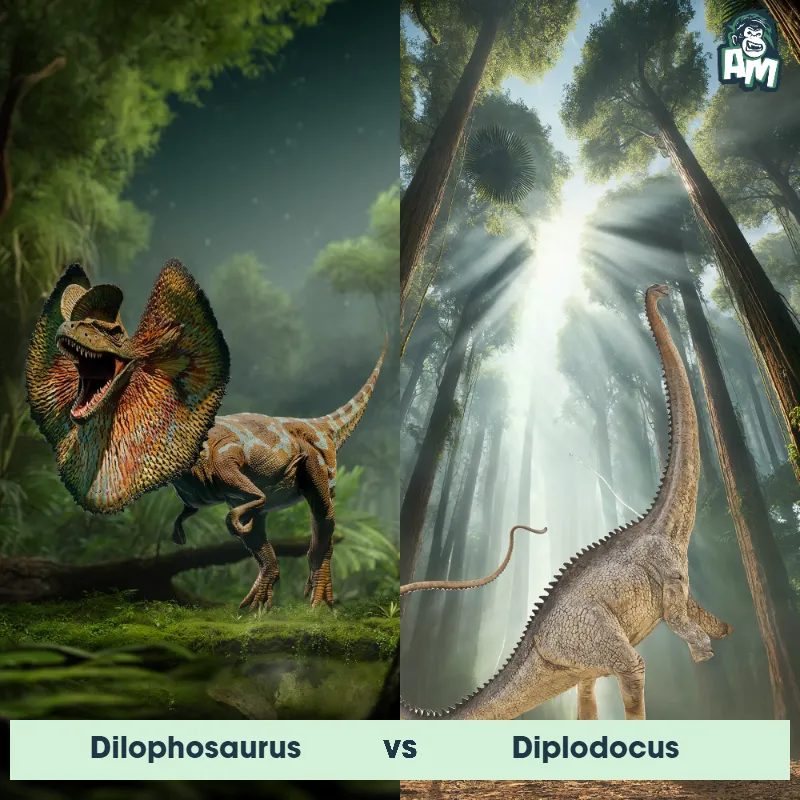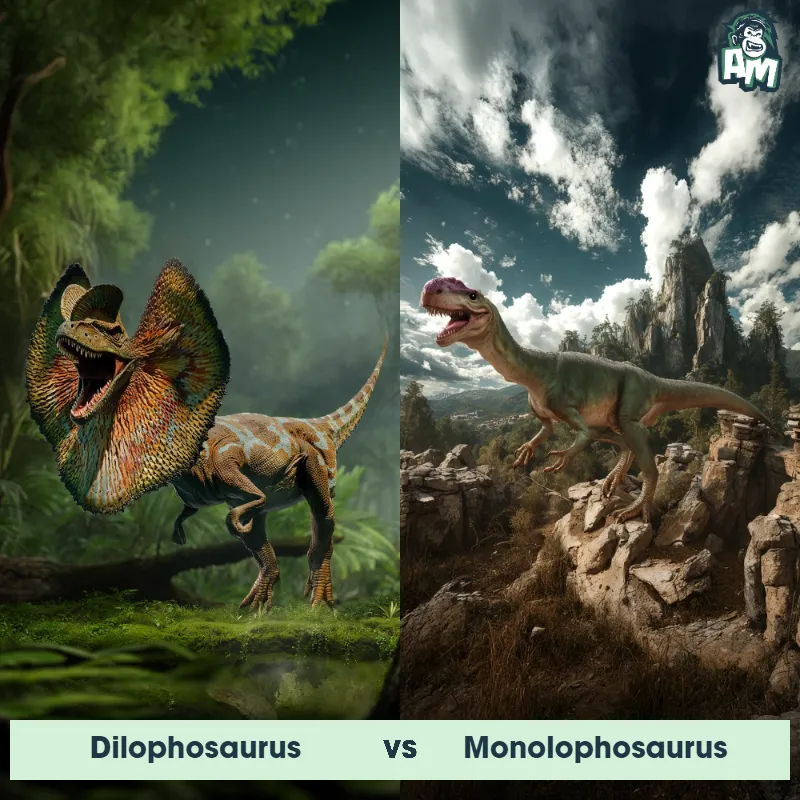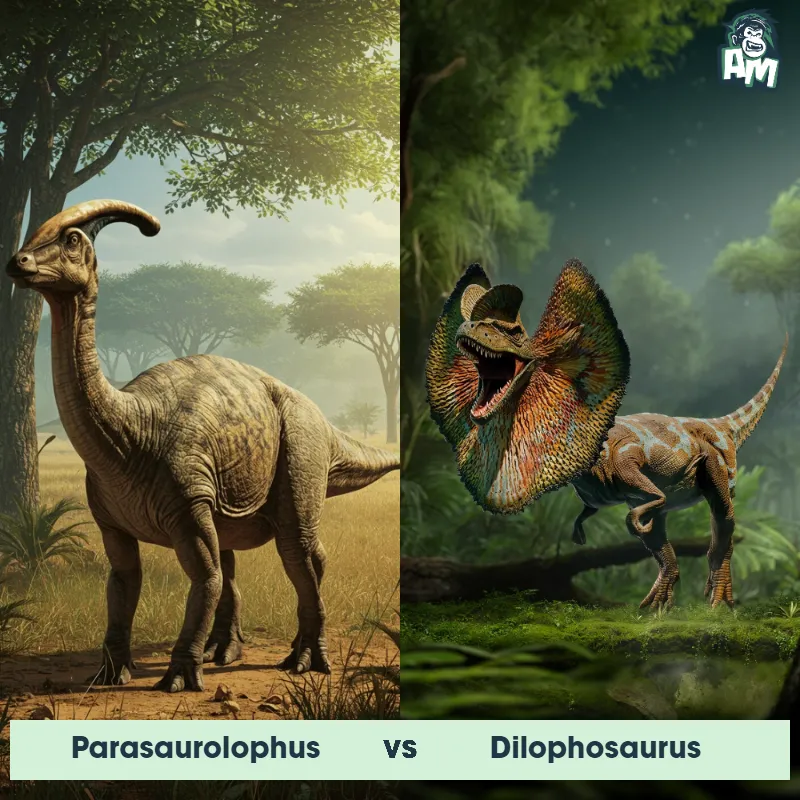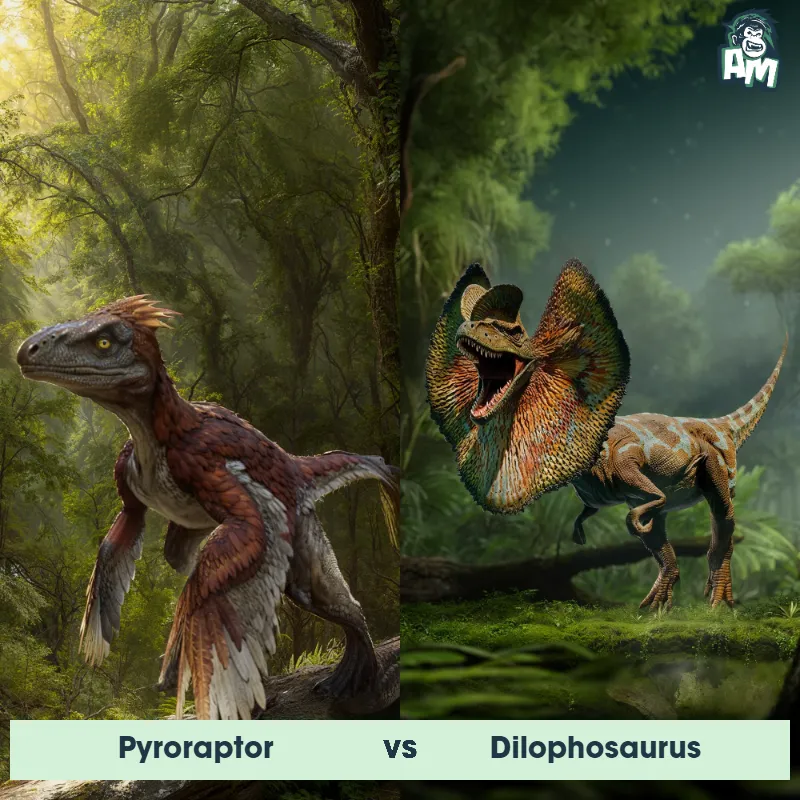The Dilophosaurus
The Dilophosaurus, also known as the "Double-Crested Lizard," was a dinosaur that roamed the Earth during the Early Jurassic period. It had distinctive double crests on its head, long legs, and sharp teeth. This carnivorous dinosaur was around 20 feet long and weighed roughly 1,000 pounds, making it a formidable predator in its ecosystem.
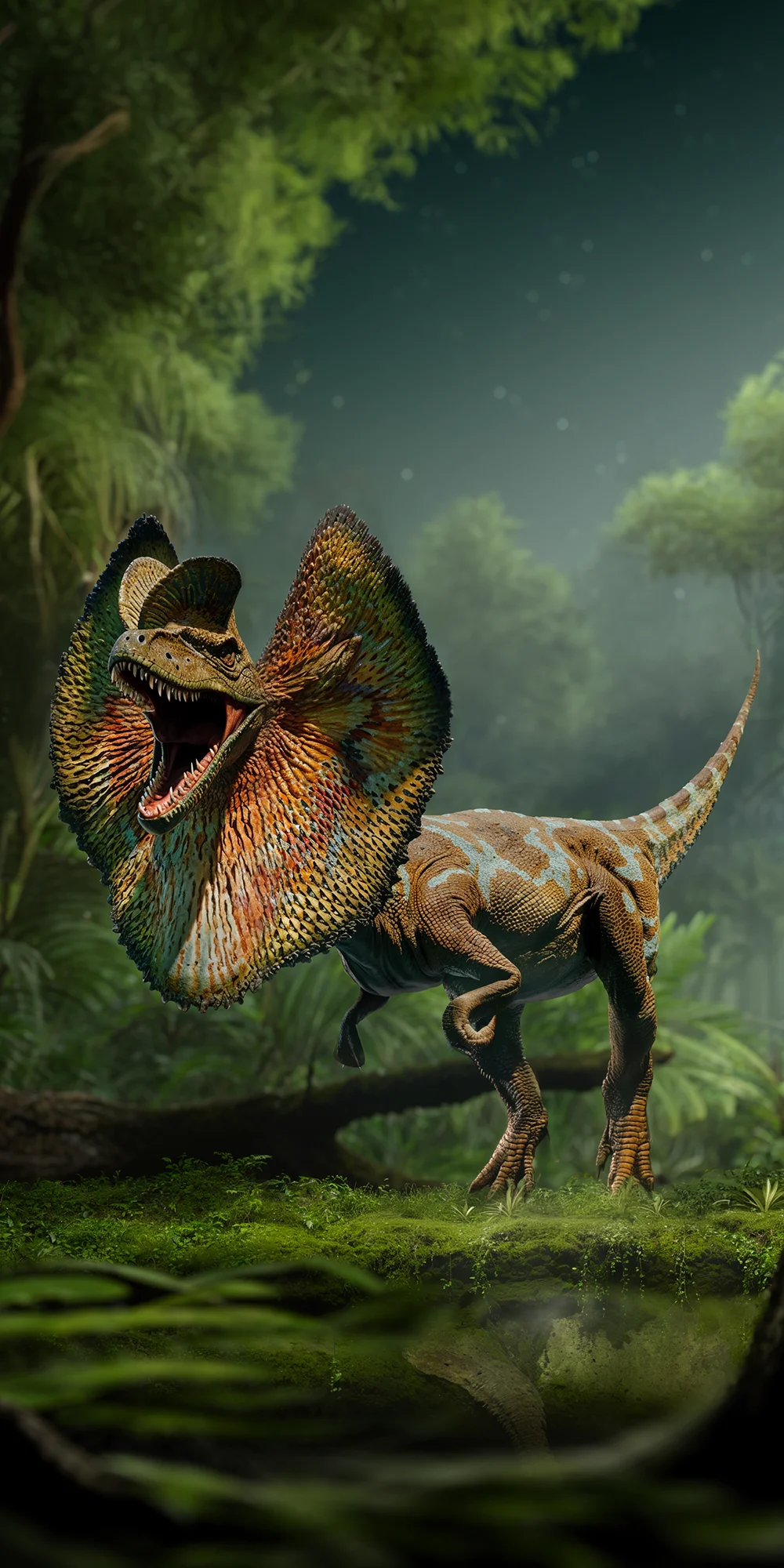
| Dilophosaurus | |
|---|---|
| Size | Approximately 20 feet (6 meters) long |
| Weight | Around 1,000 pounds (450 kilograms) |
| Speed | 25-30mph (40-48km/h) |
| Key Strength | Speed and agility |
| Biggest Weakness | Size and physical strength |
| Scientific Name | Dilophosaurus wetherilli |
| Family | Dilophosauridae |
| Habitat | Woodlands and open areas |
| Geography | North America |
| Diet | Carnivorous |
| Lifespan | 20 years - 30 years |

The Dilophosaurus
The Dilophosaurus, also known as the "Double-Crested Lizard," was a dinosaur that roamed the Earth during the Early Jurassic period. It had distinctive double crests on its head, long legs, and sharp teeth. This carnivorous dinosaur was around 20 feet long and weighed roughly 1,000 pounds, making it a formidable predator in its ecosystem.
Fun Fact: The Dilophosaurus was one of the earliest-known Jurassic dinosaurs and is famous for its fictional portrayal in the movie "Jurassic Park."
| Dilophosaurus | |
|---|---|
| Size | Approximately 20 feet (6 meters) long |
| Weight | Around 1,000 pounds (450 kilograms) |
| Speed | 25-30mph (40-48km/h) |
| Key Strength | Speed and agility |
| Biggest Weakness | Size and physical strength |
| Scientific Name | Dilophosaurus wetherilli |
| Family | Dilophosauridae |
| Habitat | Woodlands and open areas |
| Geography | North America |
| Diet | Carnivorous |
| Lifespan | 20 years - 30 years |
Dilophosaurus Matchups
We use AI to simulate matchups between the Dilophosaurus and other animals. Our simulation considers size, strength, and natural predatory behaviors to determine the most likely outcome.
Dilophosaurus: Diet, Predators, Aggression, and Defensive Behaviors
What did Dilophosaurus eat?
Dilophosaurus were carnivorous dinosaurs that primarily fed on small to medium-sized prey animals. Their diet likely consisted of reptiles, small mammals, and possibly other dinosaurs. With their sharp teeth and clawed hands, Dilophosaurus were well-equipped for hunting and tearing apart their prey.
Did Dilophosaurus have any predators?
As apex predators themselves, adult Dilophosaurus likely had few natural predators. However, juveniles or injured individuals could have potentially been targeted by larger theropods such as Allosaurus or Ceratosaurus. Additionally, Dilophosaurus may have also faced competition from other carnivorous dinosaurs in their ecosystem.
Were Dilophosaurus aggressive?
Dilophosaurus are believed to have been opportunistic hunters, relying on their speed and agility to catch prey. While they may have been territorial when it came to hunting grounds or mating partners, there is limited evidence to suggest that Dilophosaurus displayed aggressive behavior towards other creatures unless provoked or threatened.
Did Dilophosaurus fight?
Dilophosaurus likely engaged in intra-species competition, especially during mating seasons or over territory. This could involve displays of dominance, vocalizations, and physical combat between individuals. Additionally, they may have fought for food sources or defended their kills from scavengers.
How did Dilophosaurus defend themselves?
Dilophosaurus had several physical adaptations that could be used for defense. Their sharp teeth and claws were effective weapons against predators or rivals. Additionally, their ability to run at high speeds allowed them to escape from danger. Dilophosaurus may have also used their size and numbers to intimidate or overwhelm potential threats.
What was Dilophosaurus' biggest weakness in a fight?
Despite their formidable physical attributes, Dilophosaurus had limitations when it came to facing larger or more powerful predators. Their size and relatively lightweight build made them vulnerable to attacks from larger theropods. In a fight, Dilophosaurus may have struggled to defend themselves against foes with superior strength or weaponry.
Fun Fact: Despite its portrayal in popular culture, there is no scientific evidence to suggest that Dilophosaurus had the ability to spit venom like in the movie "Jurassic Park."
Fun Fact: Dilophosaurus had a strong sense of smell, which helped it locate prey and navigate its environment efficiently.



